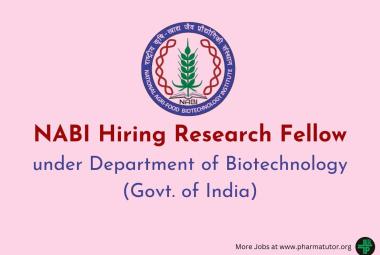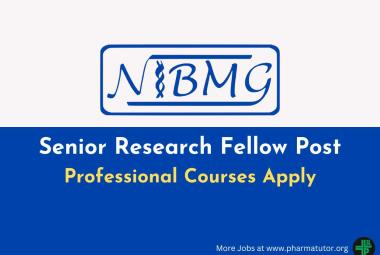About Author:
Vivek P. Chavda
Department of Pharmaceutics, B.K. Mody Government Pharmacy College,
Rajkot – 360003, Gujarat (India)
vivek7chavda@gmail.com
Abstract
This technology has just revolutionized the cancer treatment. It is clearly a tool of exceptional value in the functionalization of genes and their validation as potential targets for cancer chemotherapy. Furthermore, a rapidly expanding repertoire of antisense therapy based on the use of antisense oligonucleotides (AONs), small interfering RNAs (siRNAs), micro RNAs (miRNAs), ribozymes and other antisense compounds is being developed to block over expression of key oncogenes and other tumor promoting genes in the treatment of different tumors and many of these nucleic acid-based drugs have demonstrated impressive preclinical and clinical responses.This review highlight some of the cardinal feature of this technology.
REFERENCE ID: PHARMATUTOR-ART-1893
Introduction
Progress in sequencing the human genome has resulted in optimism that we will shortly have a much better understanding of health and disease and the factors that contribute to both at the molecular level. For no disease is there a greater need, and therefore more hope, that genomic information will result in revolutionary advances than cancer.[1]Development of agents to target oncogenes and the intracellular signalling pathways in which their products participate are some of the fruitful interventions in cancer treatment.The potential for targeting processes in transcription and translation through antisense technology stems from the specificity conferred by nucleic acid base-pairing. It might be easier to design a nucleic acid-based drug than drugs targeting proteins simply because nucleic acids are less structurally complex.[2]Antisense technology is arguably the most advanced genomically-based drug discovery technology. It hasbeen shown to be capable of generating very specific inhibitors and a significant number of antisense drugs are in development as anticancer agents.
Concept behind antisense
Antisense technology deals with designing a drug that binds irreversibly to part of a messenger RNA (mRNA) molecule, blocking translation of that mRNA which ultimately prevents the expression of its gene product. This concept becomes reality in the early 1980s. Antisense therapy is a form of treatment for genetic disorders or infections. When the genetic sequence of a particular gene is known to be causative of a particular disease, it is possible to synthesize a strand of nucleic acid(DNA, RNA or a chemical analogue) that will bind to the messenger RNA(mRNA) produced by that gene and inactivate it, effectively turning that gene "off". This is because mRNA has to be single stranded for it to be translated. Alternatively, the strand might be targeted to bind a splicing site on pre-mRNA and modify the exon content of an mRNA.[3]The two type of mechanism underlying this technology includesoccupancy only, and occupancy activated destabilization. [4]Translational arrest and inhibition of splicing is the driving road for the first mechanism whiles in second one the target RNA, is epitomized by RNaseH degradation of thetarget RNA.This synthesized nucleic acid is termed an "anti-sense" oligonucleotide because its base sequence is complementary to the gene's messenger RNA (mRNA), which is called the "sense" sequence (so that a sense segment of mRNA " 5'-AAGGUC-3' " would be blocked by the anti-sense mRNA segment " 3'-UUCCAG-5' "). Two antisense drugs have been approved by the U.S. Food and Drug Administration (FDA), fomivirsen (marketed as Vitravene) as a treatment for cytomegalovirus retinitis and mipomersen (marketed as Kynamro) for homozygous familial hypercholesterolemia.
Figure 1: The antisense strategy
Roles of antisense drugs in chemotherapy
Cancer is one of the most wide-spread diseases of modern times; with an estimated increase in the number of patients diagnosed worldwide, from11.3 million in 2007 to 15.5 million in 2030.[5]There are now a number of reports of antisenseinhibition of human tumor zenograft and other animalmodels of human cancers. Now, just over 20 years later, the first antisense product for cancer treatment has reached the clinical trial stage. The General mechanism underlying this is shown in the figure 2.
Figure 2: Working of antisense therapy
Antisense technology is supposed toprevent protein production from a targeted gene. Theexact mechanism by which this occurs remains uncertain.[6]Proposed mechanisms include triplex formation, blockingRNA splicing, preventing transport of the mRNAantisense complex into the cytoplasm, increasing RNAdegradation, or blocking the initiation of translation.Antisense technology was first effectively used in plants to alter the levels of various degradative enzymes orplant pigments. The technology was rapidly applied tomammalian cells and in 1992 Science named antisenseits runner-up in the molecule of the year award.[7]
1. G3139 and non-Hodgkin’s lymphoma
Bcl-2 is overexpressed in the majority of lowgrade non-Hodgkin’s lymphoma (NHL) cases and in ~50% of high grade NHL cases, so NHL was an obvious target for G3139 therapy. Upregulation of the Bcl-2 protein is most commonly caused by a translocation between chromosomes 14 and 18 that brings the bcl-2 gene under the transcriptional control of the immunoglobulin heavy chain promoter.[8]Thrombocytopenia was readily reversible, was not associated with bleeding, and the effects are thoughtto be due to increased peripheral destruction, not bonemarrow suppression. The only other toxicity of notewas local reactions to the subcutaneous administrationof the drug. [9]Bcl-2 expression was measured in peripheral blood lymphocytes and lymph nodes andwas reported to be reduced by treatment.[10]
2. G3139 in combination with other anticancer therapies
In a separate Phase I trial of G3139, in combination with a standard agent used to treat metastatic melanoma, significant anti-tumour responses have been observed. Scher and colleagues showed that out of35 patients treated with a combination ofG3139 and taxol, some experienced grade 3 adverseeffects – thrombocytopaenia, fatigue andrash – but none showed signs of grade 4 adversereactions. Bcl-2 expression was reducedwithin a few days of treatment. One patientwith bladder cancer showed an excellent radiographicand clinical response to treatment andis now in remission. Another had relief of pain,and the cancers in three patients with renal cellcarcinoma did not progress.[11]
3. C-myb Antisense in leukemia patients
An antisenseagent designed to inhibit C-myb has been administered at a dose of 2 mg/kg/day for 7 days as a constantinfusion to a small group of patients with chronicmyelocytic leukemia.[1]
4. AP 12009
German physicians reported on a doseescalationstudy for the compound AP 12009 (a phosphorothioate antisense oligodeoxynucleotide specific for the mRNA of human transforming growth factor TGFbeta2) in patients with high grade gliomas. At the time of the report, the median overall survival had not been obtained and the authors hinted at a potential cure.
5. The MDM2 oncogene
The MDM2 oncogene has been suggested as a novel target for cancer therapy.MDM2 is overexpressed in many human cancers, including breast, colon, and prostate cancer and high MDM2 levels are associated with poor prognosis in patients with cancer; MDM2 overexpression isassociated with advanced cancer phenotypes such as metastatic tumors and hormone-independent tumors. Antisense mixed-backbone oligonucleotides (MBO) specifically inhibit MDM2 expression in a dose- and time-dependent manner,resulting in significant anti-tumor activity in vitro and in vivo.[12]
Table 1: Antisense agents and their targets
|
Antisense agents |
Target |
|
OGX-427 |
Bladder cancer |
|
ISIS 23722 |
Survivin |
|
MG98 |
DNA methyltransferase |
|
ISIS-EIF4E |
Non-small cell lung cancer |
|
Custiresen |
Prostate cancer (OGX-011) |
|
Vitravene |
CMV |
|
Mipomersen |
apoB-100 |
Potential advantages[7]
The cardinal feature of antisense technology which imparts its great utility in cancer therapy includes;
1. Oligonucleotides may be manufactured quickly, some within one week, and the sequence of a gene is all that is needed.
2. Potential sensitivity to therapy may be easilymeasured, as the target is often one-dimensional versusmultiple-dimensional domains often targeted withinproteins. Sensitivity can be measured through databasescanning or Northern/Southern blotting for unknowngenes.
3. Potential to produce longer lasting responses, asclonal expansion may require more time to produceclinical disease once mRNA is inhibited, versus justinhibition of protein typical with conventional therapies.
4. Potential for enhanced binding affinity to target, ashydrogen bonding between oligonucleotide and targetappears to exceed, by several orders of magnitude, Vander Waals and other forces used by standard agents tobind to protein targets.
Conclusion
Antisense oligonucleotides (ASO) are becoming more widely accepted as potential therapeutics for cancer therapy.Antisense are different from conventional drugs that are designed to interact with protein molecule. Antisense drugs have more selective action and they have the potential to be more effective and less toxic than conventional drugs.
References
[1] Crooke ST. Potential roles of antisense technology in cancer chemotherapy. Oncogene 2000;19:6651-9.
[2] Carter G. Antisense technology for cancer therapy: does it make sense? Br J Cancer 1993; 67:869-76.
[3] Morcos PA. Achieving targeted and quantifiable alteration of mRNA splicing with Morpholino oligos. Biochem Biophys Res Commun 2007;358:521–7. .
[4] Baker BF, Monia BP. Antisense technology. Biochimica et Biophysica Acta 1999;1489:3 -18.
[5] Guo J, Bourre L, Soden DM, O'Sullivan GC. Can non-viral technologies knockdown the barriers to siRNA delivery and achieve the next generation of cancer therapeutics? Biotech Adv 2011;29:402- 17.
[6] Crooke ST. Progress in antisense therapeutics. Med Res Rev 1996;16: 319-44.
[7] Saonere JA. Antisense therapy, a magic bullet for the treatment of various diseases: Present and future prospects. Journal of Medical Genetics and Genomics 2011;3:77 - 83.
[8] Waters JS. Phase I clinical and pharmacokinetic study of bcl-2 antisense oligonucleotide therapy in patients with non- Hodgkin’s lymphoma. . J Clin Oncol 2000;18:1812–23
[9] Cotter FE. Haematologica 1999;84:19 - 32.
[10] Webb A, Cunningham D, Cotter F, Clarke PA, di Stefano F, Ross P, et al. Lancet 1997;349:1137 - 41.
[11] Scher HI. A phase I trial of G3139 (Genta Inc.), a bcl-2 antisense drug, by continuous infusion as a single agent and with weekly taxol. American Society of Clinical Oncology 2000;New Orleans:20.
[12] Zhang R, Wang H, Agrawal S. Novel Antisense Anti-MDM2 Mixed-Backbone Oligonucleotides: Proof of Principle, In Vitro and In Vivo Activities, and Mechanisms. Current Cancer Drug Targets 2005;5:43-9.
NOW YOU CAN ALSO PUBLISH YOUR ARTICLE ONLINE.
SUBMIT YOUR ARTICLE/PROJECT AT articles@pharmatutor.org
Subscribe to Pharmatutor Alerts by Email
FIND OUT MORE ARTICLES AT OUR DATABASE









